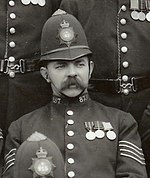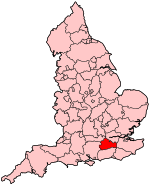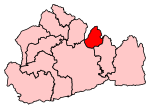Epsom and Ewell

Epsom and Ewell () is a local government district with borough status and unparished area in Surrey, England, covering the towns of Epsom and Ewell. The borough was formed as an urban district in 1894, and was known as Epsom until 1934. It was made a municipal borough in 1937. The district was considered for inclusion in Greater London in 1965 but was left unaltered by the London Government Act 1963 and the Local Government Act 1972 in 1974. However, despite being outside modern Greater London the borough was in the Metropolitan Police District until it was transferred to Surrey Police in 2000. In the May 2019 elections, the borough was held by the Epsom and Ewell Residents Association with 32 seats, Labour with 3 seats, Liberal Democrats with 2 seats, and Conservatives with 1 seat. In March 20th, 2023, the borough was held by the Epsom and Ewell Residents Association with 31 seats, Labour with 3 seats, Liberal Democrats with 2 seats, Conservatives with 1 seat and 1 seat vacant.
Excerpt from the Wikipedia article Epsom and Ewell (License: CC BY-SA 3.0, Authors, Images).Epsom and Ewell
The Parade, Epsom and Ewell Woodcote
Geographical coordinates (GPS) Address Phone number Website Nearby Places Show on map
Geographical coordinates (GPS)
| Latitude | Longitude |
|---|---|
| N 51.3329 ° | E -0.2651 ° |
Address
Epsom Town Hall
The Parade Town Hall
KT18 5BY Epsom and Ewell, Woodcote
England, United Kingdom
Open on Google Maps










